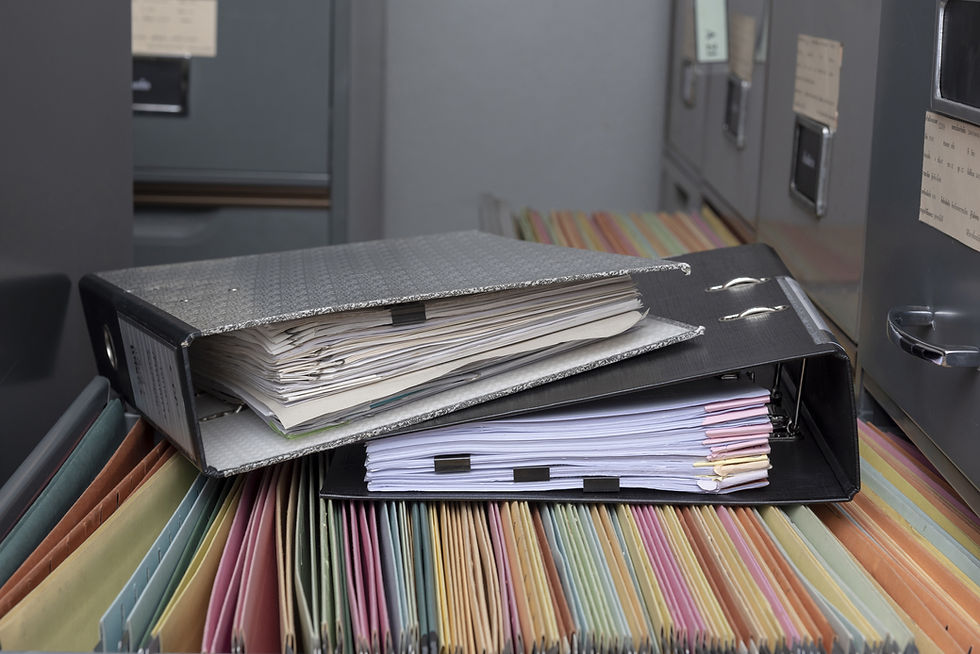Using RFIs Before an RFP: Why Smart Procurement Teams Don’t Skip This Step
- Robert

- Sep 9
- 4 min read
Updated: Sep 12

Table of contents
Introduction
Too many procurement teams rush straight into drafting an RFP and then wonder why supplier proposals look vague, mismatched, or overly expensive. The truth is, a strong RFP starts well before it’s written. That’s where the Request for Information (RFI) comes in.
In this article, we’ll let you know what an RFI is, why it matters, when to use one, and how to get the most value out of it. We’ll also compare RFIs with RFPs, show the benefits of automating the process, and explain why Prokuria makes RFIs painless.
In case you don't have time to read the whole article, here is the podcast for you to listen to:
What is an RFI?
An RFI (Request for Information) is a short, structured document used at the early stage of the procurement process. Its purpose isn’t to request detailed bids or pricing - it’s to gather market intelligence directly from suppliers.
An RFI helps you understand:
Which suppliers operate in your target region
Their capabilities, certifications, and delivery models.
Rough cost ranges and lead times.
Emerging trends or alternative solutions.
Think of it as fact-finding with supplier input. You’re not locking into a deal - you’re testing feasibility.
Why Use an RFI Before an RFP?
Jumping into an RFP without an RFI is like designing a building without surveying the land. You can do it, but you’re setting yourself up for trouble.
Here’s why RFIs are worth the effort:
Clarity upfront: Suppliers highlight what’s realistic, so your RFP isn’t full of impossible requirements.
Market awareness: You see the real landscape of vendors, technologies, and pricing benchmarks.
Risk reduction: You avoid timelines, budgets, or specs that would have been unworkable.
Stronger RFPs: Instead of generic proposals, you get tailored, competitive bids.
Supplier screening: You can cut out unqualified vendors before they invest time in a full proposal.
Procurement teams that skip the RFI stage often face rework, missed deadlines, or underperforming suppliers. Those who use RFIs build cleaner, more competitive RFPs from the start.
When to Use an RFI
RFIs aren’t always necessary. If you’re buying standard office supplies, go straight to the RFP or RFQ. But when the project has uncertainty or complexity, an RFI is your best friend.
You should use an RFI when:
Sourcing products with technical variations
Example: You need industrial-grade components but aren’t sure which certifications matter most.
Expanding into new markets Useful for mapping local supplier capacity, compliance requirements, or logistics realities.
Exploring alternative solutions Example: Testing whether modular construction or recycled materials are feasible options.
Validating supplier qualifications Particularly in regulated industries like construction, healthcare, or aerospace.
Checking budgets and timelines RFIs provide a “sanity check” on what’s achievable before launching a formal tender.
In short: use RFIs anytime you need clarity before commitment.
Best Practices for RFIs
Getting useful responses from suppliers depends on how you design the RFI. Here’s what works best:
Keep it concise → Don’t overwhelm suppliers with a 20-page questionnaire. Stick to the essentials.
Ask structured questions → Group by business, technical, compliance, service, and logistics areas.
Stay neutral → Don’t hint at preferred answers; the goal is discovery, not negotiation.
Share insights internally → Use supplier responses to align your team on requirements before drafting the RFP.
Use a template → A standardized RFI template keeps responses consistent and easy to compare.
Want a head start? Download Prokuria’s free RFI Template
RFI vs RFP
RFIs and RFPs often get confused, but they play very different roles in procurement.
Aspect | RFI (Request for Information) | RFP (Request for Proposal) |
Purpose | Explore options & validate feasibility | Request detailed solutions & pricing |
Stage | Early, exploratory | After requirements are clear |
Supplier Input | Capabilities, certifications, insights | Detailed proposals, technical plans, pricing |
Effort Required | Low – simple questionnaire | High – full proposal preparation |
Impact | Shapes requirements & scope | Directly influences supplier selection |
Put simply: RFI = exploration. RFP = decision-making.
Benefits of Automated RFIs
Many teams still manage RFIs with emails and spreadsheets, which creates chaos: lost attachments, inconsistent answers, and zero transparency. Moving RFIs into a procurement platform changes the game.
Benefits of automated RFIs include:
Speed → Send, collect, and organize responses in minutes.
Standardization → Suppliers answer in a consistent format for easy side-by-side comparison.
Collaboration → Internal stakeholders can review responses in real time.
Auditability → Full record of communications, responses, and approvals.
Integration → Seamlessly transition RFI data into the RFP stage.
Instead of juggling inboxes, everything sits in one place - structured, transparent, and easy to act on.
Why Should You Choose Prokuria’s Software?
Running RFIs well is the foundation of a smart procurement process. Prokuria makes this easy by providing:
Ready-to-use templates for RFIs, RFPs, and evaluation.
Automated workflows that save hours of manual work.
Collaboration tools that bring suppliers and internal teams onto the same page.
Seamless transition from RFI insights to RFP execution.
By using Prokuria, you don’t just gather supplier information - you set yourself up for a streamlined, competitive, and risk-free RFP process.
Ready to simplify your RFI process? Book a demo with Prokuria and see how automation transforms supplier outreach into a strategic advantage.
An RFI is just the first step. If you want the complete roadmap—from information gathering to bid evaluation, negotiation, and contracting—download our free eBook: RFP & Negotiation Mastery.
It includes:
5 ready-to-use templates (RFI, RFP, Evaluation Matrix, Negotiation Kit, and Checklist).
Over 100 negotiation tips and 50 red flags to watch out for.
A contract checklist to reduce risks and set clear deliverables.
Our eBook:




Comments